12 National Soups From Around The World
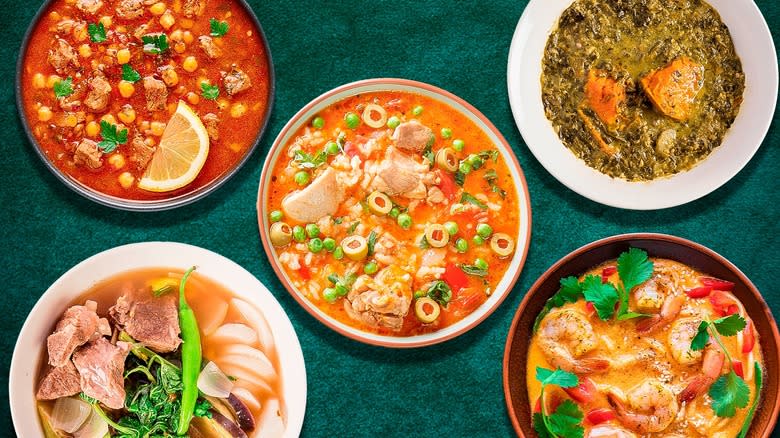
When it's cold, or you're feeling miserable, what food do you turn to for comfort? For a lot of us, the answer is soup. It's the frugal cook's best friend, turning whatever ingredients are available into something warm and nourishing through a sort of culinary alchemy.
There's scarcely a culinary culture you could name that doesn't have at least a few cherished soups. Some are so closely identified with a people, or a culture, that you might even describe them as "national soups." That status is rare, and especially difficult in the case of countries with distinctive regional or ethnic cuisines. Which soup would you choose for France, for example, or China? Would Spain's be gazpacho, or olla podrida?
Those are difficult questions, and hotly debated, but there are many soups and stews (it's a thin line) that can reasonably be described as "national soups" for a people or a country. Here are a dozen from around the world that are worth trying, listed along with their country or place of origin.
Read more: 20 Popular Canned Soups, Ranked Worst To Best
Puerto Rico: Asopao
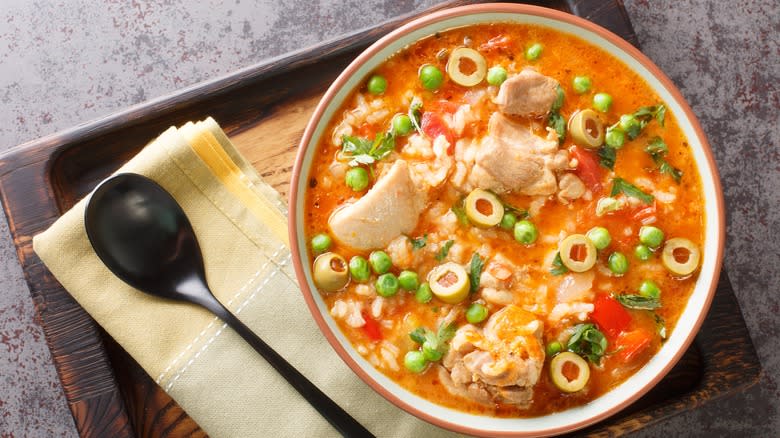
Peoples and -- later -- nations have been migrating around the planet for a long time, and archaeologists have often been able to trace the movement of cultures by the crops and foodways they've brought with them. Some of the world's most fascinating culinary cultures have grown from this kind of culinary cross-pollination.
Consider asopao, the much-loved national soup of Puerto Rico. It's often described as a mashup between the saffron rice of colonial Spain (itself a culinary memory of the Moorish conquest), and the West African gumbo that arrived with the slave trade. The soup is broth and tomato-based, rich with vegetables -- though it no longer includes gumbo's signature okra -- and with enough rice to make it hearty and sustaining.
There are as many recipes and variations of asopao as there are cooks, and different versions might be chicken-based (asopao de pollo), shrimp-based (asapao de camarones), or drawn on whatever else is on hand that day. Garnishes can also be pretty idiosyncratic, including oddball choices like capers or pimento-stuffed olives. It may sound unconventional at first blush, but it all works.
Morocco: Harira
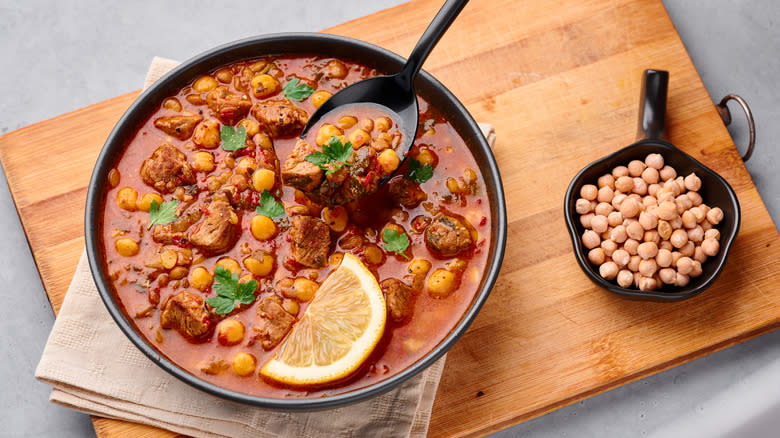
Some ingredients leave their place of origin and become so firmly entrenched in other cultures that they feel irreplaceable. Consider how chile peppers have been embraced throughout much of Asia, for example, or how tomatoes became a signature ingredient in Mediterranean cooking.
But the Mediterranean has a southern coast as well as a northern one, and tomatoes are equally loved there. In fact, they're a crucial ingredient in Morocco's national soup, harira. Harira is packed with flavor, showing Moroccans' love of warm spices. It's a mixture of legumes and vegetables, simmered with warm spices in water and tomatoes, and finished with rice or fine noodles for added substance. When it's nearly ready, it's thickened with either beaten eggs, or a flour-and-water slurry to give it a smooth texture. Vegetarian and meat-based versions are both common.
Harira is often served during Ramadan when observant Muslims fast until sundown. Harira's rich flavors and signature silky-smooth broth -- its name is derived from the Arabic word for silk -- make it especially welcome as a reward for fasting all day.
Ukraine: Borscht
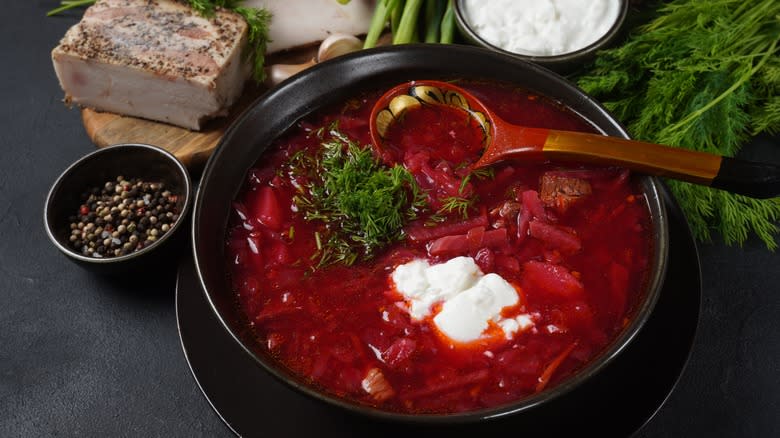
When you think of borscht, which country do you think of first? Most of us probably associate it with Russia, though Polish Americans likely connect it with their ancestral homeland, instead.
In truth, this regional soup likely originated in what is now Ukraine, where it's deeply ingrained in the country's culinary culture. In fact, in 2022, the U.N. agency UNESCO declared it to be part of Ukraine's "intangible cultural heritage." There are distinct varieties of borscht within Ukraine, as well as outside it, but the canonical version –--dark red with beets, and rich with meat -- is the best known.
The U.N. cites the soup's deep roots in Ukrainian culture in its declaration, pointing to a tradition in one of the country's regions where visiting a new daughter-in-law's home for borscht is part of the traditional days-long wedding celebration. This is not to say that other versions, like Poland's much-loved chlodnik or Mennonite's tomato-based borscht, are worth a try in their own right.
Philippines: Sinigang
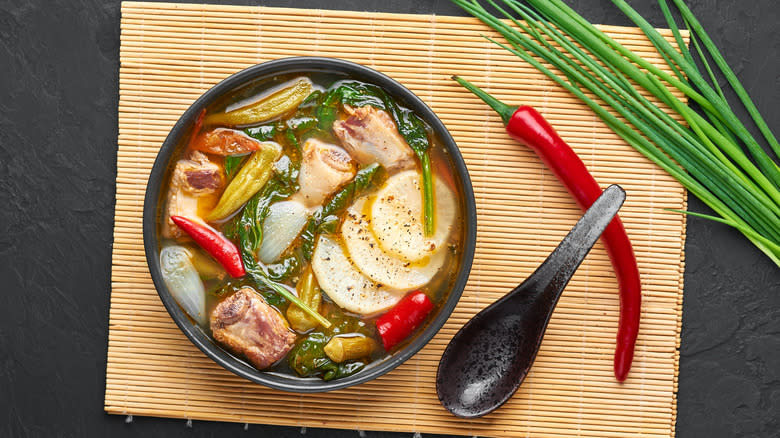
It's striking to think that at the bottom, all of the world's flavors boil down to just a few categories -- sweet, sour, salty, or hot -- and a few less-definite variations like bitterness, earthiness, and savoriness. They're all good, but some culinary cultures embrace one or another of them with special enthusiasm.
If you like sour, tangy flavors, for example, you'll feel right at home in the Philippines. They're the world champions of sour, and nothing encapsulates that passion like a bowl of tart, flavorful sinigang. Sinigang consists of a combination of starchy staples like rice or taro, whatever fresh vegetables the cook chooses to use for texture and color, and proteins such as shrimp or pork. Most importantly, it will be soured with fruit: tamarind, guava, or both.
Philippine adobo is arguably the country's best-known dish among outsiders (and thanks to a Filipino aunt, was the first authentic Asian food we ever ate), but the Philippines' greatest food writer and popularizer, Doreen Fernandez, argued passionately for sinigang's central place in the Philippines' heart and culture. In an influential 1975 essay, she made a case that sinigang was not just a much-loved food, but also in its way represented the archipelago's tangled cultural and culinary heritage in a single bowl.
Singapore, Malaysia: Laksa
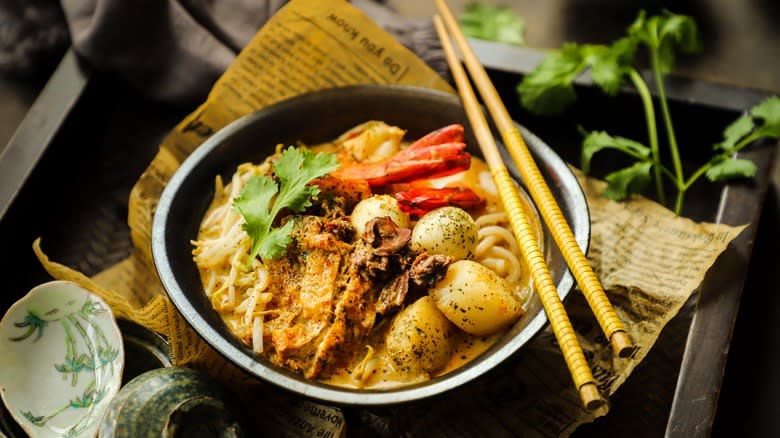
Some foods are so good that they spread from their starting point to entire regions. You'll find versions of hummus and falafel all over the Middle East, for example, claimed and loved by multiple nations. Similarly, laksa is enjoyed and loved across several countries. That said, there are two countries where it's especially cherished and could be called a "national soup." Those are Singapore and Malaysia.
Singapore's government proclaims laksa to be part of its cultural heritage, while Malaysia's former tourism minister caused an international spat in 2009 by staking a claim to laksa and other much-loved dishes. So what is this soup that stirs up so much passion? The dish sounds simple enough: It's a spicy noodle soup with coconut-milk broth and some kind of seafood. But that doesn't scratch the surface of laksa's complexity.
Even an easy laksa recipe has a forbidding ingredients list, while traditional versions are a multi-day affair that includes making shrimp or chicken broth, rolling your own noodles, and, most importantly, creating a complex, aromatic spice paste from scratch. Falling back on ready-made noodles and a store-bought spice paste will make things a lot easier if you want to try your hand at homemade laksa.
Egypt: Melokhia
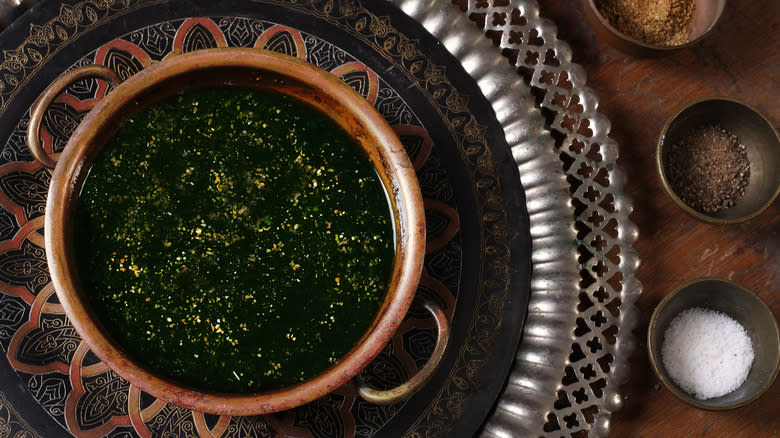
How do you thicken your soups? Cream soups are often thickened with flour or other starches, while some vegetable- or legume-based soups thicken themselves when puréed. There's a third group that is thickened by a vegetable ingredient, often okra.
Egypt's national soup, melokhia, falls into this third category. It's made with (traditionally) rabbit or (more recently) chicken broth, and copious quantities of greens from a regional variety of mallow plants. Those greens release a thickening gel when cooked, just as okra does, and, like okra, it has a texture that's somewhat (ahem) "polarizing" if you haven't grown up with it. That doesn't deter Egyptians, who slurp it up in volume.
The soup is usually served over a mound of rice cooked together with browned-up, broken vermicelli noodles (think "Mid-East Rice-a-Roni"), with chicken or rabbit added, and a final garnish of cilantro and garlic toasted until it's brown and fragrant. Some Egyptian cooks add a bit of tomato paste, or shrimp instead of chicken, and that's fine too. It's definitely one of those Egyptian dishes you need to try if you get the chance. If you're an okra-hater, and dubious about melokhia's texture, maybe try the equally-iconic bean stew, ful medames, instead.
Trinidad & Tobago: Callaloo
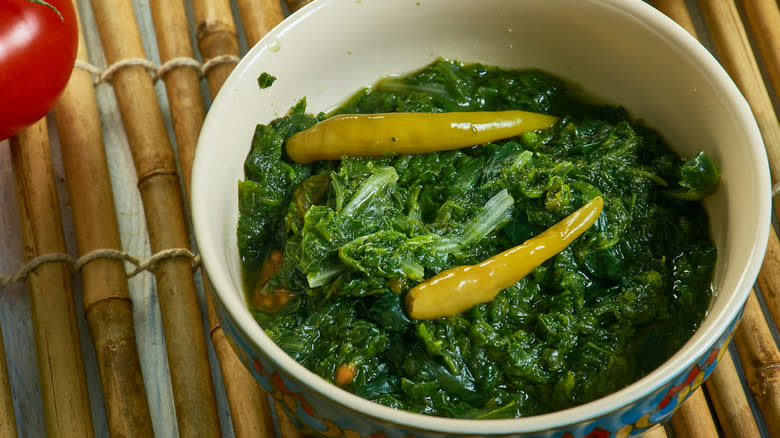
Trinidad is known for a lot of things. Your mental picture may include the iconic beaches, the friendly people, or the lively soca tunes playing at the beach-front bar, for example. But from the culinary perspective, one of the most iconic things you'll find in Trinidad is callaloo.
The key ingredient in callaloo is leafy greens. The "callaloo" of the soup's name is a variety of amaranth, but the leaves of taro plants are an equally popular option (the plants' roots are a staple starchy crop throughout the tropical regions). They're cooked in a broth made with coconut milk, fragrant with onions, garlic, and Scotch Bonnet peppers, and then bulked up with pumpkin and okra.
The finished bowl can be eaten as a soup or made extra-thick and served over rice as a full meal. Trinidadian-style callaloo recipes are usually meatless, though elsewhere they may contain salt pork. Callaloo is popular throughout the Caribbean, and wherever Caribbean expats live, but it's thought to have originated in Trinidad and you'll find recipes for it on government websites there. The soup was even reportedly a "hit" with Queen Elizabeth.
Portugal: Caldo Verde
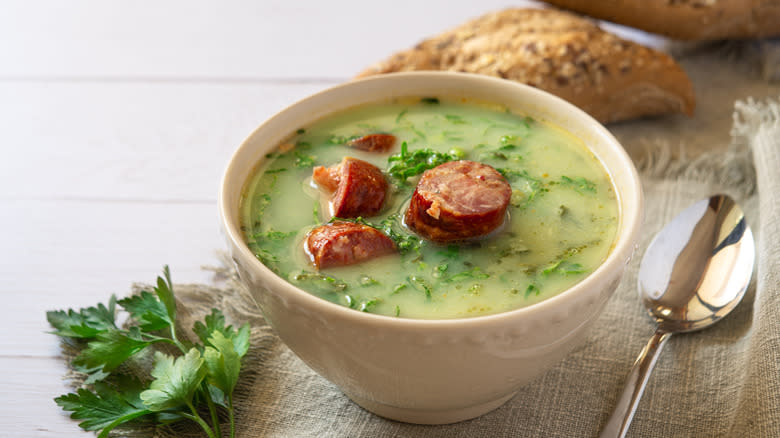
Some soups are refined and elegant, and in our career, we've turned out a few of those (both traditional and improvised). The ones that become "national soups," though, tend to come from the modest homes of everyday people. They're grown from the ground up, so to speak, using local ingredients and distilling them into an expression of the country's everyday life.
Portugal's caldo verde (literally "green broth"), is a prime example of the second type. It's a simple soup, centered around potatoes, garlic, flavorful chouriço sausage, and the local Portuguese variety of kale. It's hearty, workingman's food, with the potatoes mashed into the broth as a thickener, the kale lending it plenty of vitamins, and the smoky sausage infusing its flavor through the whole bowl.
Simple as it is, it's a dish you have to try when visiting Portugal. Unlike many foods you'll sample while traveling, this one is easy to reproduce at home. You can use any variety of kale that's available in your local stores -- or collards if you prefer -- and if you can't find Portuguese chouriço, dry-cured Spanish chorizo (not Mexican chorizo, they're very different) is a good substitute. Caldo verde is a personal favorite of ours, and a reason we grow so much kale in our garden.
Greece: Fassoulatha (Or Fasolada)
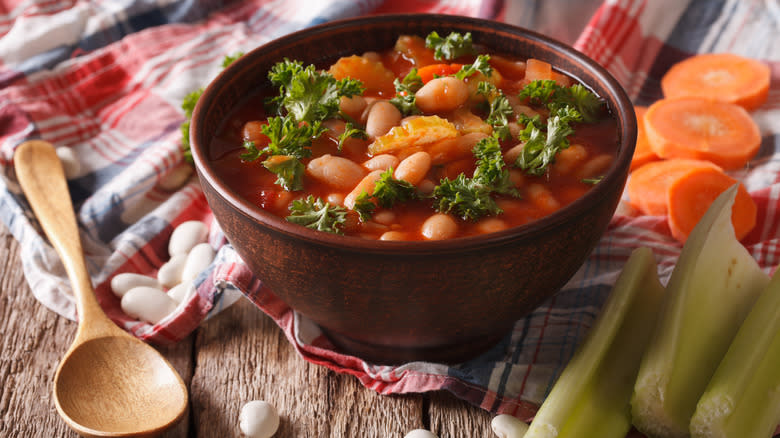
Over the past several decades researchers have been fascinated by the good health and longevity of many Greeks, and that research gave rise to what we now think of as the "Mediterranean diet." Many people describe the Mediterranean diet as being low in saturated fat, with minimal consumption of red meats but with lots of vegetables, legumes, and healthy fats.
Fasolada (or fassoulatha) is a case in point. This is Greece's much-loved everyday soup, hearty enough to serve as a meal in itself. Its core ingredients are white beans and a handful of aromatics, usually onions, garlic, and celery. Most recipes -- but by no means all -- add tomatoes or tomato paste, as well. Traditionally, a generous dollop of good olive oil is added to the bowl when it's served. It may lack the finger-food versatility of dolmas or mini spanakopita, but it's definitely a Greek dish to try at least once.
Nearby Turkey has an equally-loved soup called kuru fasulye, which is very similar. The Turkish version is more likely to have meat added, but it's very much a bean soup with meat, not a meat soup with beans. The similarities aren't accidental; the countries are geographically close and the Turks formerly ruled Greece for several centuries.
Mali: Tigadeguena, Or Mafé
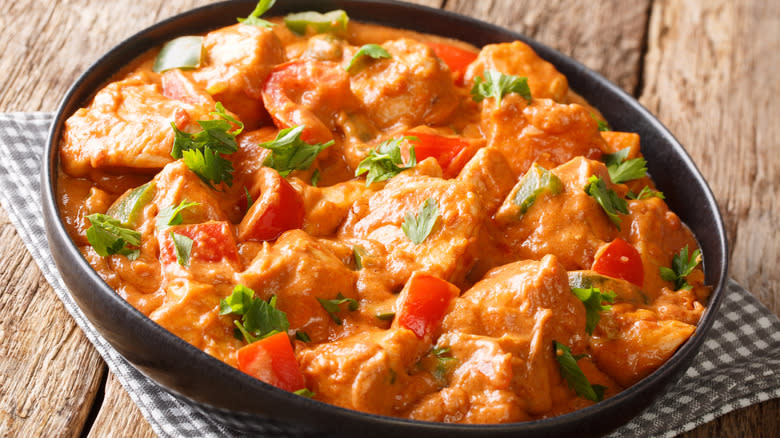
Mafé, like laksa, is one of those dishes that has spread well beyond its original home, becoming the de facto national soup (or stew) of several West African countries. You'll often see it called "groundnut stew," because groundnuts -- aka peanuts -- are the key ingredient. The idea of peanut soup might sound odd to North American ears, but peanuts are a legume, like peas and beans, and we've all had soups made with those.
Mafé has its origins in Mali, where it's known as tigadeguena (spellings will vary). The base of the soup is a paste of ground peanuts (yes, you can use natural peanut butter as a substitute), which gives it its rich, hearty texture and flavor. In Mali, it's made with tomato paste, sweet potatoes, and chilies, and home cooks often add a bouillon cube for extra flavor. It's served over a thick paste made of fonio, the local millet (picture a finer-textured version of grits, with a nuttier flavor). Meat, often chicken, is optional.
The Senegalese version of mafé is more likely to include meats, often mutton or beef. Mafé made in coastal countries often includes seafood instead, something you wouldn't find in land-locked Mali. Some versions are thick stews, served over rice, while others are more soup-like and are served with starchy dumplings called fufu. If you have the chance to try it in a West African restaurant (Senegalese, Gambian, Malian, Ghanaian) by all means order it.
Chile: Cazuela
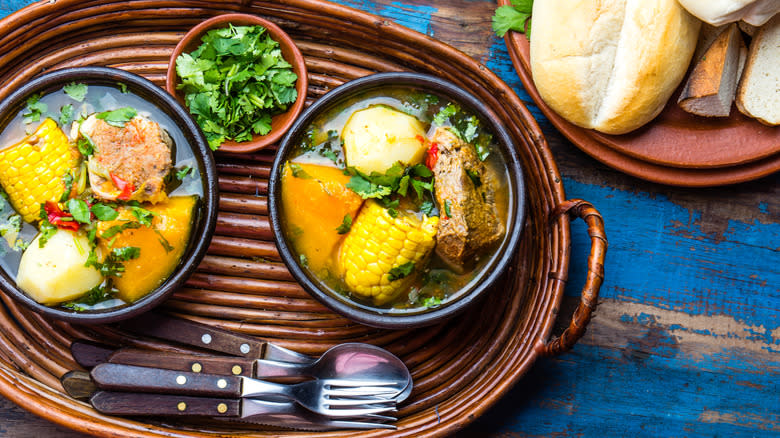
Chile is just over 200 miles wide at its broadest point, but stretches over 2,600 miles from north to south. Its climate ranges from high deserts near the Peruvian border to harsh cold at the southern tip, near Antarctica, with a pleasantly Mediterranean climate in its central heartlands.
Yet, across all of that diversity, and all of those miles, you'll find Chileans sitting down to the same soup. It's called cazuela, after the earthenware dish it's traditionally prepared in. It's a hearty, homey dish with as many variations as there are Chileans, but it typically consists of a flavorful broth, the cook's choice of long-simmered meats, usually beef or chicken, and potatoes and vegetables in large pieces.
It's a hearty and filling dish, perfect to warm your belly on cold nights in the mountains. Traditionally it's treated as two courses in a single bowl: First, you drink off the soup, then you eat the meat and vegetables left in your bowl.
Burma: Mohinga
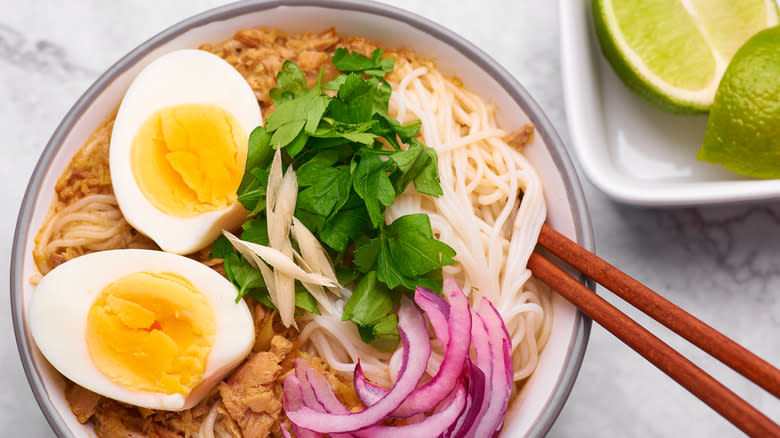
Asia's noodle soups are an institution in themselves, with more variations that even the most diligent traveler could manage to try. Sometimes they're served as part of a grand dinner, sometimes they're slurped hastily for lunch at a street vendor's cart, and sometimes they're breakfast.
Burma's national soup falls into that last category. It's the universal breakfast all across that country. Mohinga consists of a richly flavored fish broth, lightly thickened with ground, toasted rice, which adds a mild but distinctive nuttiness. The broth is well-perfumed with lemongrass, ginger, and spices, then ladled over rice noodles. It's finished with big pieces of fish cooked in that same broth, and garnishes including limes, cilantro, and hard-boiled eggs.
You can make this hearty Burmese breakfast stew at home, if you have ready access to an Asian grocery, though it's helpful if you have the chance to try it first at a Burmese-owned restaurant. That way you'll have a better idea of the flavors you're looking for, and how to balance them.
Read the original article on Tasting Table.

